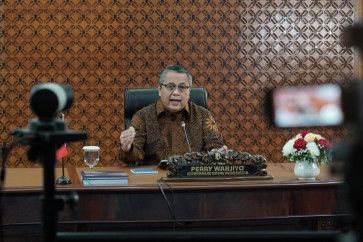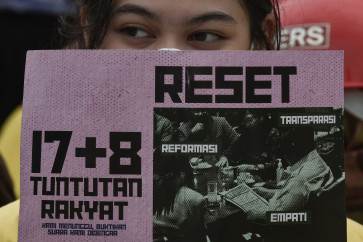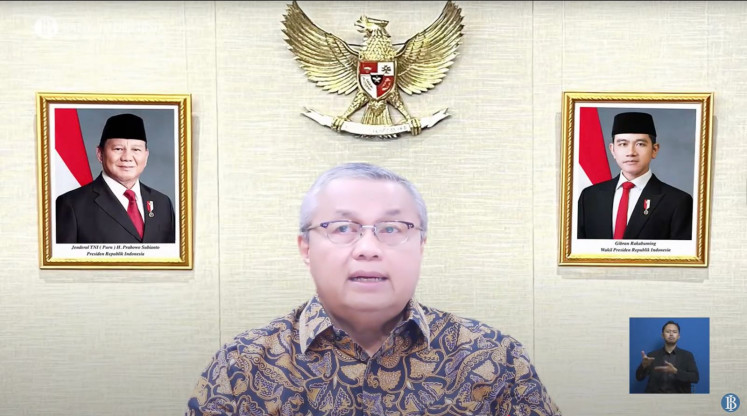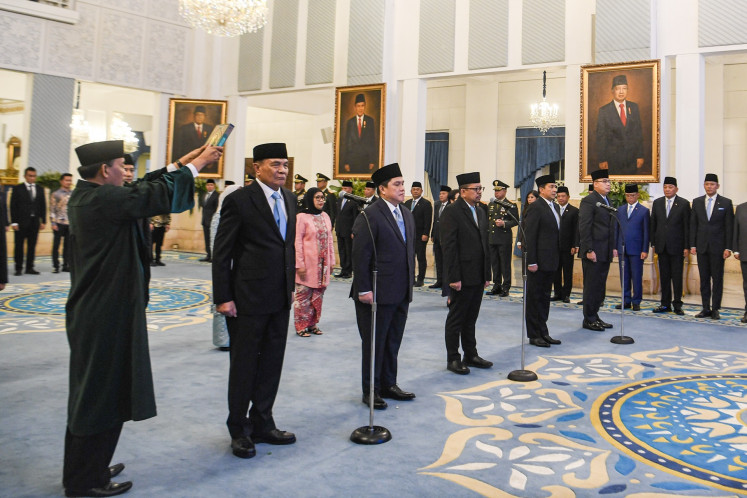Popular Reads
Top Results
Can't find what you're looking for?
View all search resultsPopular Reads
Top Results
Can't find what you're looking for?
View all search resultsShared services: Doing more with less
In the era of Industry 4
Change text size
Gift Premium Articles
to Anyone
I
n the era of Industry 4.0, in which the government comes under constant pressure to seek ways and means of “doing more with less”, shared services as an alternative service delivery model needs to be considered.
Shared services is a business model using information technology as an enabler to provide better service with fewer resources. With the impact of widely available cutting-edge technology in improving government public service delivery and the rapidly gaining popularity of shared services among the public sector, will the Indonesian government follow suit?
Multinational professional services company Accenture defines shared services as the consolidation of administrative or support functions (such as human resources, information technology and procurement) from several departments or agencies into a single, stand-alone organizational entity whose only mission is to provide services as efficiently and effectively as possible.
Shared services have been commonly practiced not only in the private sector but also in the public sector.
In the public sector or government budget and finance realms, the shared services model works to support functions such as payrolls, utility bills (electricity and water) and other common expenses. By implementing shared services, the organization expects to push down costs, gain efficiency and focus on public service improvements.
At the heart of shared services is information technology (IT), which empowers service providers. IT in shared services replaces the numerous traditional and fragmented existing systems.
In developing the shared services IT system, the government may opt for either developing an application system in-house or buying off-the-shelf commercial software.
The hallmark of shared services is the service level agreement (SLA) — an accountability document to be observed by the service provider and service recipients. By providing an agreement on expected service level outcome, agreed cost structure and the general roles and responsibilities of each party, the SLA improves the accountability framework of government services, which frequently lack details on rights and responsibilities.
So, the question is, should the government shift its traditional model of sourcing into a shared services model?
The answer lies in whether the government can gain benefits that outweighs the cost of implementing shared services.
Take an example of how the transition from traditional payroll to shared services can generate state budget efficiency.
Payroll shared services will reduce the cost for maintaining a good number of system applications fragmented in around 12,637 central government spending agencies and 179 regional treasury offices of the Finance Ministry.
This can be done by integrating at least four applications used by the government to process payroll: GPP application, GPP BUN application, SAS application and e-SPM.
Payroll applications are currently not integrated to human resources information systems, such as the Human Resource Information System in the Finance Ministry and the Employment Information System Application in the Administrative and Bureaucratic Reform Ministry.
With shared services, both payroll application and human resource information systems will be integrated to relieve administrative burdens and red tape as well as enhance data integrity.
Second, in managing payroll administration and payments, the government spends a budget for payroll processor allowances. In 2019, the government allocated around Rp 4.5 trillion (US$321 million), whereas with shared services the budget for payroll administrator allowances will go down to Rp 4.4 trillion.
The efficiency will be even greater if shared services coverage is expanded beyond payroll to utilities payments such as electricity, telephone and water bills, travel expenses and procurement of assets and services.
However, shared services implementation is not without challenges, such as the resistance from managers whose responsibilities are reduced by the new scheme. In addition, the implementation of shared services will inevitably incur costs for development of the system, standardizing procedures and developing new governance.
Despite the expensive initial outlay and upfront investment, the potential benefits of shared service may be greater than the cost, due to the economies of scale and economies of scope materialized in the long run and the strategic impact that shared services offers.
Having been aware of the tremendous benefits and the incurring cost of implementing shared services, several issues need to be taken into consideration before implementing it.
First, the government needs to ensure not only technical but also legal certainty.
The changes in regulation are sine qua non for shared services, at least for the purpose of accommodating a new standardized business process and in mitigating the risk of state losses due to the operationalization of shared services.
Second, the shared service initiative is relevant to the ongoing development of the Integrated Financial Management Information System (IFMIS) in Indonesia.
As such, any planning and intention to migrate to shared services should converge to the broader framework of the ongoing development of IFMIS.
Third, any transformation cannot be exclusively implemented with a sustainable change management program as the lynchpin of successful shared services implementation.
Furthermore, given the personal impact that implementation will have on staff within the organization, the government needs to find strategies to reallocate employees.
Indeed, the shared services model can be a panacea for inefficiency in managing tax payers’ money, thus improving the quality of public service delivery.
______________________
The writer, who holds a PhD in economics and management from the University of New South Wales, Australia, works for the Finance Ministry. The views expressed are her own.










